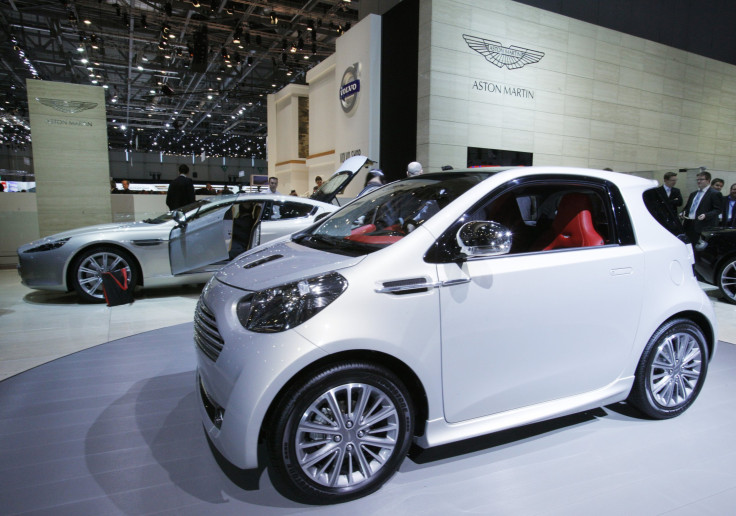Aston Martin Should Have Seen Where City Cars Are Headed Before Making The Cygnet; Who Wants A $50,000 Gas-Powered Mini?

Aston Martin named its minicar Cygnet, the Latin word for young swan, but after only three years that goose has been cooked.
The London-based luxury automaker that’s owned by two private equity groups – Kuwait’s Investment Dar and Italy’s Investindustrial – has been struggling to go head-to-head in its traditional market in high-lux full- sized sedans and sports cars, namely because the company’s owners don’t have the deep pockets of its competitors like Bentley Motors Ltd, owned by Volkswagen AG (FRA:VOW3), Rolls Royce Motor Cars, held by Bayerische Motoren Werke AG (FRA:BMW), and Jaguar Land Rover Ltd, owned by Tata Group through its Tata Motors subsidiary.
And, as pointed out Monday in the Financial Times, Aston Martin has not been able to diversify.
The Cygnet underlined a debilitating lack of new products at Aston. An inability to move into growth areas such as luxury SUVs has seen it lag behind rivals such as Porsche and Jaguar Land Rover, both owned by global automotive conglomerates with deep pockets.
The company that seemed perennially identified as that car 007 agent James Bond tooled around in while fighting Cold War bad guys hasn’t been able to get its groove back since Ford Motor Co. (NYSE:F) sold the company to two Kuwaiti investment firms in 2007 for $925 million amid the U.S. automaker’s failed push to go global by acquiring foreign car companies. (Investindustrial stepped in last December buying a 37.5 percent stake in the British company.)
Apparently pawing in off a great British icon to Persian Gulf equity firms -- not exactly known as experts in turning around car companies -- wasn’t such a great idea, and the Cygnet is a good example of how not to save a high-luxury car manufacture.
The three-door Cygnet, a decked-out, rebadged variant of the Toyota iQ built in part to meet Europe’s fleet-average emissions, was rolled out in 2009 and was put down this year, costing Aston Martin $20.2 million – an expensive loss for a boutique carmaker. Perhaps company officials thought there was a market for a $50,000 gas-burning city car in a market where an Audi A1 mini costs less than half that, a Smart ForTwo (by Mercedes-Benz) starts at less than a third, and the all-electric BME i3 currently rolling out globally is starting at closer to $40,000.
It turns out that the market seems uninterested in high-end mini luxury. City cars are by definition vehicles for more pragmatic drivers, and vanity owners (people who buy cars to be seen in them) are likely to embrace plug-in tech for their city-car needs.
That the Cygnet was simply a fancy version of a Toyota, with a six-speed manual transmission and a 1.3 liter gasoline engine, seems to put it last out of the gate while other minicar makers are moving forward in embracing plug-in systems (either all electric or hybrid) based on the premise that city car owners might eschew range anxiety and buy affordable cars that meet their metro-area needs even if they don’t make for practical cross-country road trips.
Yes, the Cygnet was never intended to be a city car for the plebeians, unlike the popular Ford Fiesta, the Cheverolet Aveo or BMW’s Mini. But as we can see from the failure of the Cygnet, the luxury minicar segment just isn’t quite ready for prime time.
© Copyright IBTimes 2024. All rights reserved.












